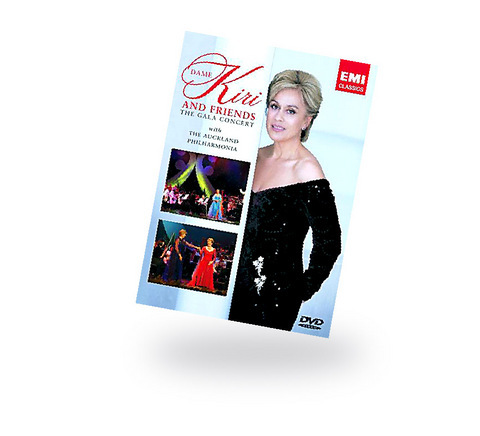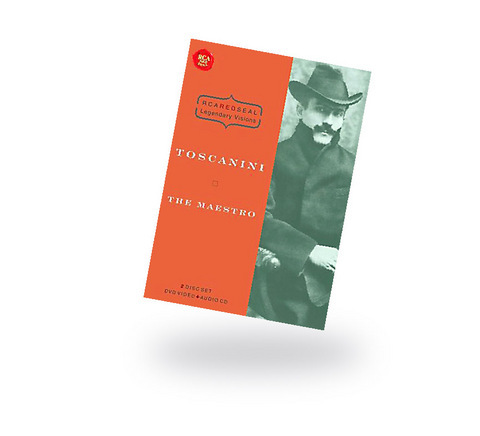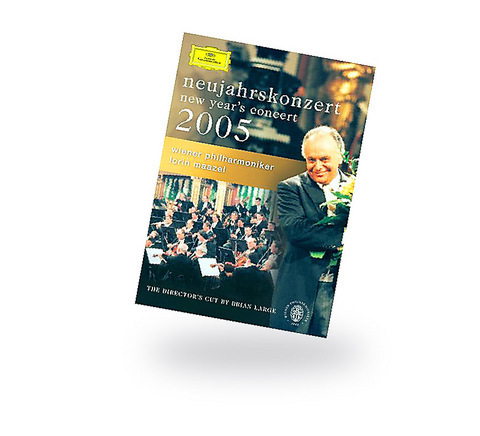Following last month's outstanding DVD of the children's opera The Little Prince from Sony comes Igor Stravinsky's Le Rossignol (The Nightingale) from Virgin. The differences are many. Though containing a Chinese child in a leading role, Le Rossignol isn't really for children. Instead, it's a beautiful, indeed extraordinary animated film that's not only highly imaginative in itself, but also draws out to a marvelous extent the imaginative dimensions implicit in the music.
The story is from the Danish writer Hans Andersen, and Stravinsky's text is sung in Russian. That said, this is a very French affair - sophisticated, culturally eclectic, and exceptionally high-tech. Ten animators worked on the post-production of this 50-minute film for an entire year. The result is probably one of the most original DVDs featuring classical music ever made.
The story is set in China, and there is a rich collection of chinoiserie from beginning to end - a fisherman inside a rotating blue china bowl, opening fans that magically change color, costumed courtiers (real and mechanically duplicated), a scale-model porcelain palace both filmed for real and re-created on endless computers, a live nightingale and cellphone iPod images all happily coexist in this dazzling, surreal, dream-China world.

In addition, massed hands tap at computers, black gloves dance across the sky, a fat pink monk laughs inside a pear-shaped jar, and Chinese lanterns bob and whirl, with their tassels following rumbustiously after.
This film seems to take every technique ever used in pop music videos and blend them in a super-stylish amalgam. On numerous occasions it proves itself extra-sensitive to the music, actually using animated versions of the instruments we're hearing as well as picking up on tiny but significant details in the score. The result is a masterpiece, and if it flags slightly after the first half-hour that is small price to pay for the intricate splendors -- sometimes exquisitely beautiful, sometimes deliberately kitschy and syrupy -- that have gone before.
The enormous time it takes to create something like this is the only reason why all classical music shouldn't be subjected to similar treatment. It has the power to transform the genre from stuffy costume drama, or concerts performed by modern people in inappropriate and unnecessary formal dress (see below), back to the genuinely imaginative force the finest music was at its inception, and has the potential of becoming once again.

Director Christian Chaudet's Le Rossignol, in other words, is a DVD in a thousand. There's over an hour of bonus material on how it was made, much of it wearying, but the actual film itself is stunning almost beyond belief. The one shortcoming is that there are no Chinese subtitles.
Toscanini: The Maestro is a package containing a DVD version of RCA Red Seal's excellent 1985 film about Toscanini's life and work, plus a CD of Toscanini recordings used in the film presented at slightly greater length. What is worth having is the DVD. It includes much historical footage, and even includes a few seconds of Verdi's funeral in 1901. The maestro is glowingly remembered by several members of the NBC Orchestra that he led after leaving Italy becuause of the Fascist take-over, and the James Levine of 20 years ago adds his authority to the high estimation of Toscanini that the film espouses.
The film inevitably contains an imba-lance. Toscanini's achievements in early life are largely neglected in favor of his later years for which more footage exists. This, after all, was a man who conducted the first performance of Turandot in 1926. But it's a fine film despite that.

One point Levine makes is that Toscanini, in taking on the NBC job, knew that the acoustics of the hall didn't really suit an orchestra, but accepted it because they favored the recording techniques of the time. What he wanted was to reach the vast new audience that radio offered. Few today will relish the recorded sound of 60 years ago on the accompanying CD, but perhaps will tolerate it in order to understand the approach of a veteran maestro who in his youth knew Verdi.
It's tempting to say that Dame Kiri and Friends is everything that classical music needs to get away from. It shows a concert last year in Auckland performed by Kiri Te Kanawa dressed up to the nines plus some of her fellow New Zealanders, not all of them talented. The formal evening dress does for the exercise from the start -- classical music will never survive if it is made to depend on such divisive pretension. The addition of a number from The Lord of the Rings and a Maori song if anything makes matters even worse.
And finally we have yet another of the dreaded New Year Concerts from Vienna. Year after year they come out, with virtually identical music and an almost certainly identical super-affluent Viennese audience. Only the conductor -- this time Lorin Maazel -- changes. There are, it's true, some optional danced episodes this time (someone at least was conscious of the shortcomings of this dreary annual ritual), but for the rest the Alpine scenes added as a tourist-promoting bonus gave the only pleasure I derived from this mournful DVD.


May 26 to June 1 When the Qing Dynasty first took control over many parts of Taiwan in 1684, it roughly continued the Kingdom of Tungning’s administrative borders (see below), setting up one prefecture and three counties. The actual area of control covered today’s Chiayi, Tainan and Kaohsiung. The administrative center was in Taiwan Prefecture, in today’s Tainan. But as Han settlement expanded and due to rebellions and other international incidents, the administrative units became more complex. By the time Taiwan became a province of the Qing in 1887, there were three prefectures, eleven counties, three subprefectures and one directly-administered prefecture, with

It’s an enormous dome of colorful glass, something between the Sistine Chapel and a Marc Chagall fresco. And yet, it’s just a subway station. Formosa Boulevard is the heart of Kaohsiung’s mass transit system. In metro terms, it’s modest: the only transfer station in a network with just two lines. But it’s a landmark nonetheless: a civic space that serves as much more than a point of transit. On a hot Sunday, the corridors and vast halls are filled with a market selling everything from second-hand clothes to toys and house decorations. It’s just one of the many events the station hosts,

Among Thailand’s Chinese Nationalist Party (KMT) villages, a certain rivalry exists between Arunothai, the largest of these villages, and Mae Salong, which is currently the most prosperous. Historically, the rivalry stems from a split in KMT military factions in the early 1960s, which divided command and opium territories after Chiang Kai-shek (蔣介石) cut off open support in 1961 due to international pressure (see part two, “The KMT opium lords of the Golden Triangle,” on May 20). But today this rivalry manifests as a different kind of split, with Arunothai leading a pro-China faction and Mae Salong staunchly aligned to Taiwan.

Two moves show Taichung Mayor Lu Shiow-yen (盧秀燕) is gunning for Chinese Nationalist Party (KMT) party chair and the 2028 presidential election. Technically, these are not yet “officially” official, but by the rules of Taiwan politics, she is now on the dance floor. Earlier this month Lu confirmed in an interview in Japan’s Nikkei that she was considering running for KMT chair. This is not new news, but according to reports from her camp she previously was still considering the case for and against running. By choosing a respected, international news outlet, she declared it to the world. While the outside world